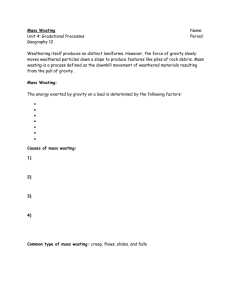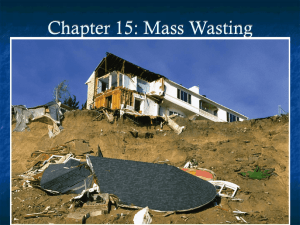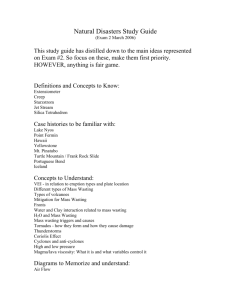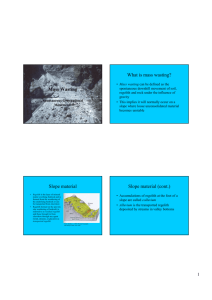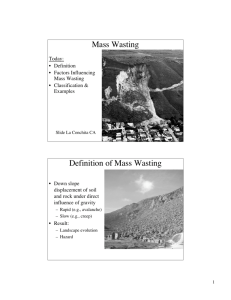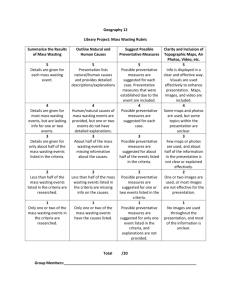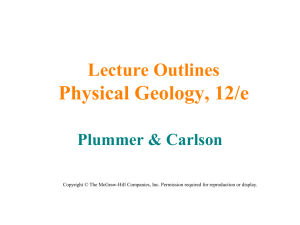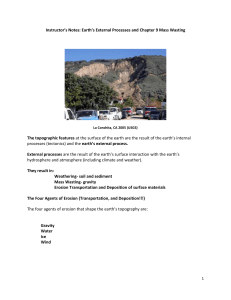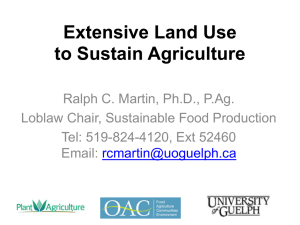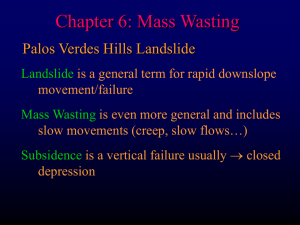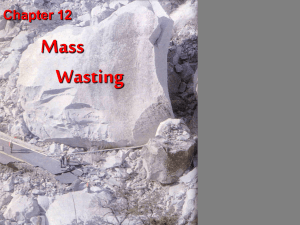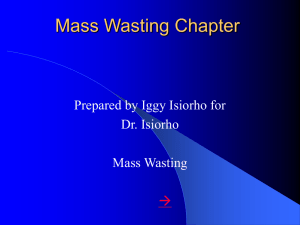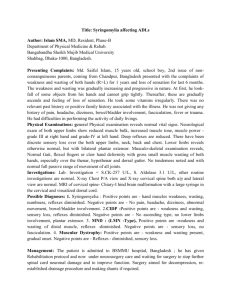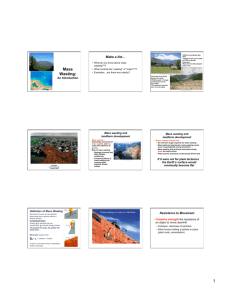MASS WASTING
advertisement
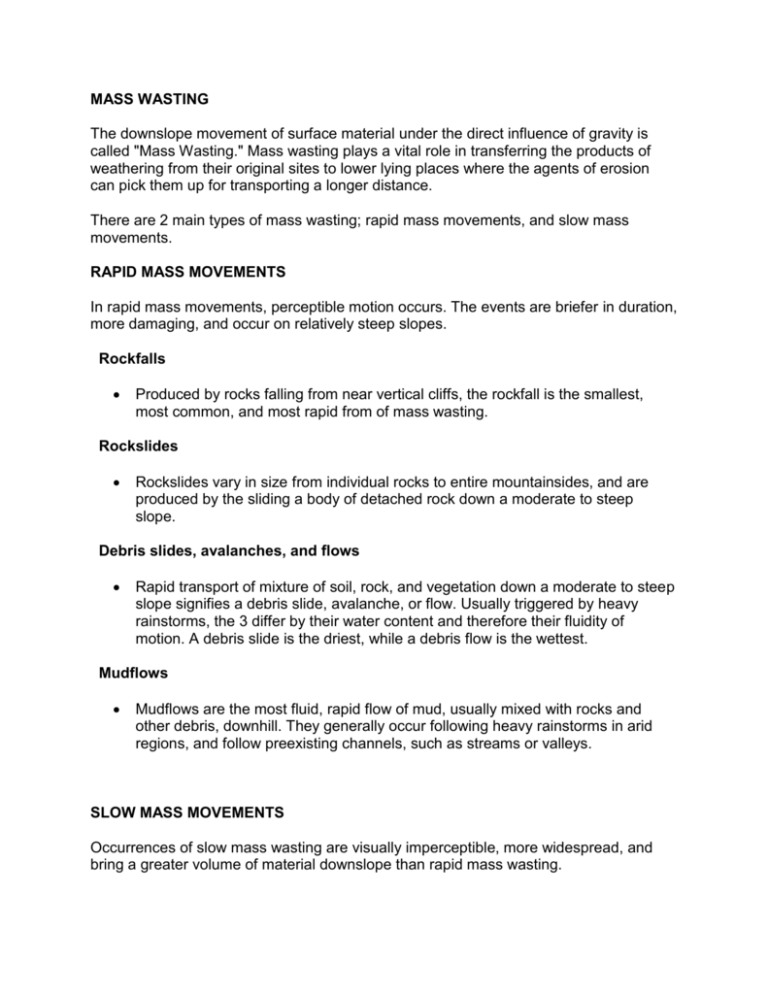
MASS WASTING The downslope movement of surface material under the direct influence of gravity is called "Mass Wasting." Mass wasting plays a vital role in transferring the products of weathering from their original sites to lower lying places where the agents of erosion can pick them up for transporting a longer distance. There are 2 main types of mass wasting; rapid mass movements, and slow mass movements. RAPID MASS MOVEMENTS In rapid mass movements, perceptible motion occurs. The events are briefer in duration, more damaging, and occur on relatively steep slopes. Rockfalls Produced by rocks falling from near vertical cliffs, the rockfall is the smallest, most common, and most rapid from of mass wasting. Rockslides Rockslides vary in size from individual rocks to entire mountainsides, and are produced by the sliding a body of detached rock down a moderate to steep slope. Debris slides, avalanches, and flows Rapid transport of mixture of soil, rock, and vegetation down a moderate to steep slope signifies a debris slide, avalanche, or flow. Usually triggered by heavy rainstorms, the 3 differ by their water content and therefore their fluidity of motion. A debris slide is the driest, while a debris flow is the wettest. Mudflows Mudflows are the most fluid, rapid flow of mud, usually mixed with rocks and other debris, downhill. They generally occur following heavy rainstorms in arid regions, and follow preexisting channels, such as streams or valleys. SLOW MASS MOVEMENTS Occurrences of slow mass wasting are visually imperceptible, more widespread, and bring a greater volume of material downslope than rapid mass wasting. Slump The intermittent movement (slip) of a mass of earth or rock along a curved plane is a slump. A slump is most likely to occur after a heavy rain, on a steep slope with deep, clay-rich soils. Earth flow Earth flows are slow flowage of nearly saturated soils down moderate to steep slopes. Earth flows are more fluid, shallower, and smaller than slumps. Creep The slowest and least noticeable, but most widespread of the slow mass wasting categories is creep. Creep involves the entire hillside, and is characterized by very slow movement of soil or rock material over a period of several years.
